Dear Ladies and Gentlemen, do you think people see you as a classy person today? Actually, the way you behave today at the table may have shown you were from a low background in the past. Or even a slave. Do you want to check how you would have been perceived before? Travel through time with me!

Sitting straight on a chair
If you attended our class you MUST still remember it:
- We sit with a back straight
- Shoulders down and back
- Arms on the table
- One hand space between you and the table
- No slouched shoulders
- We don’t lean on the back of the chair

But, if you had done that 2000 years ago at dinner table, it would have meant that you were… a slave!
Indeed, in Antiquity only free men were allowed to lie down to eat. Children and slaves had to eat sitting down.
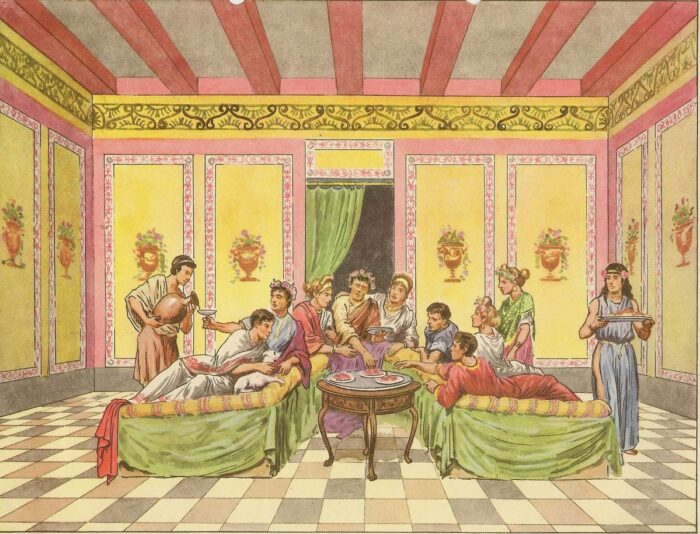
Next time if you feel guilty eating on your bed;simply tell yourself you would have been a noble in Antiquity.

Eating bread, rice or pastas
Can we imagine a day, even a meal, without rice, pastas or bread? The majority of us wouldn’t. Nowadays it’s even the mark of a formal dinner:
- You have a piece of bread
- You must tear it in small pieces, not in a whole
- You use hands, never a knife
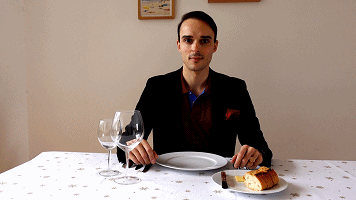
Well, in the middle-age doing so would have made manners of a begger. Or worse, an animal.
Noblemen by then used to have their meal on a large and thick slice of bread called “tranchoir”, which was absorbing the juice of meat and sauces.
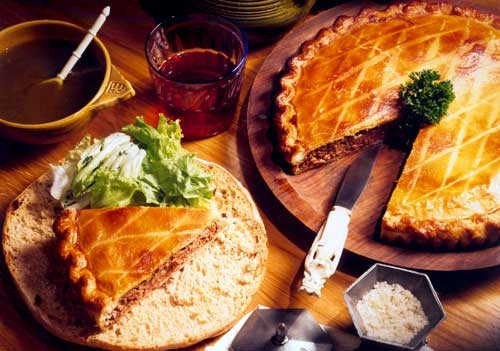
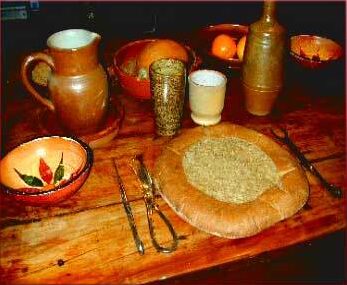
But they would never dare to eat it! The food for nobles was meats, sweets, and possibly vegetables. Definitely not pastas, bread or rice! The tranchoir was given to beggers, or to dogs.
The noble life was quite different with today, right ?
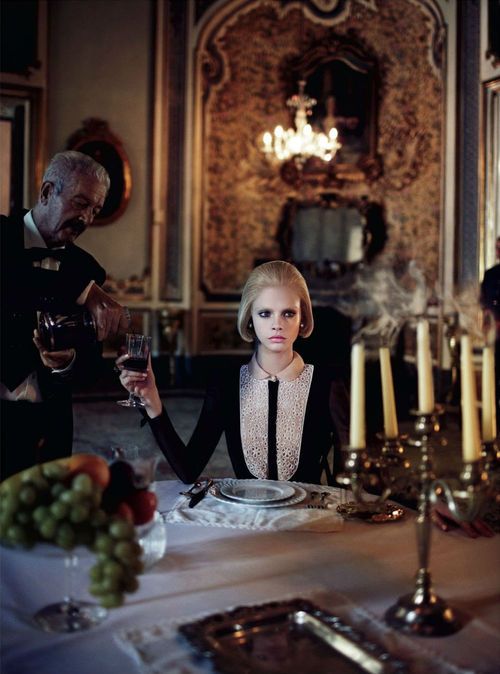
Holding the tea cup by the handle
Do you hold the cup by the handle ? You would have had no manners in the 18th century.
Tea cups are from China, and originally have no handle, like the little round ones today. When Europeans discovered them, nobility created the saucer. For what? Look at these portraits:
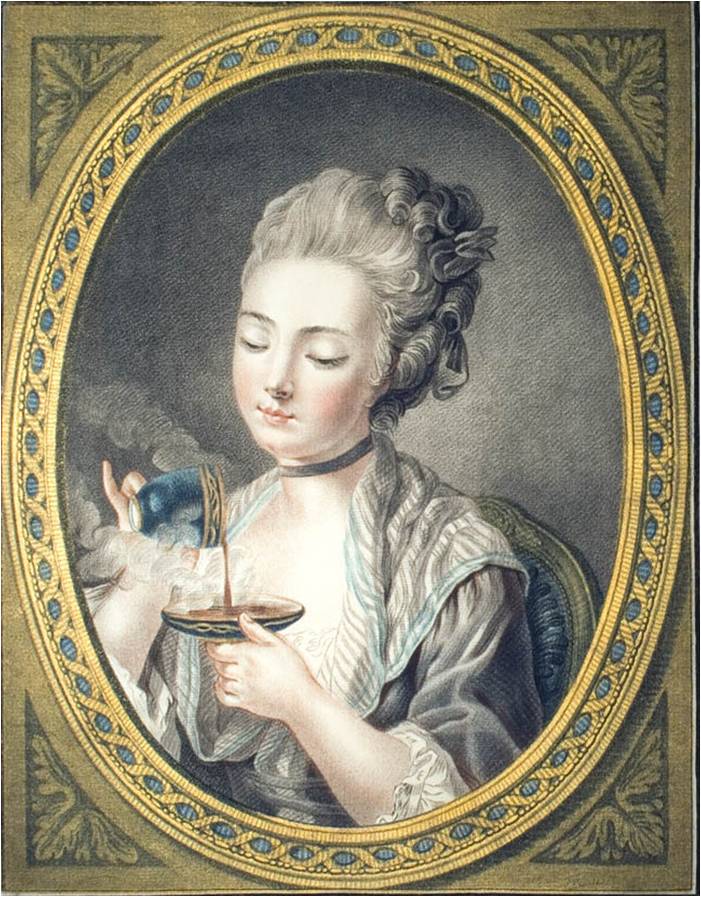
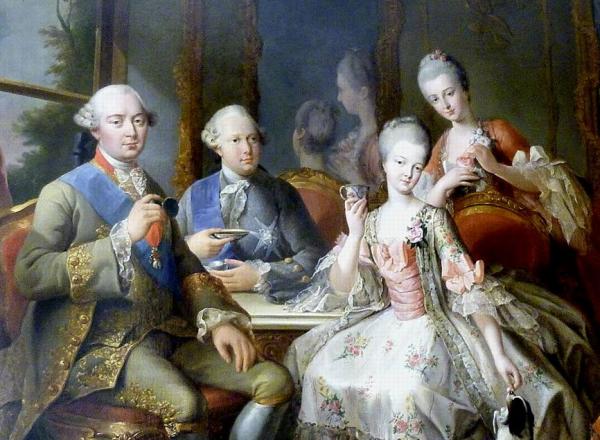
In order to cool down the tea – or the coffee – wealthy people pour it on the saucer, and drink from it.

Of course, nowadays things have changed ! We have a handle, and by the way you hold it we can tell if you have manners or not:
- Don’t pass your finger into the handle
- Pinch the handle
- Lift the cup without bending your head
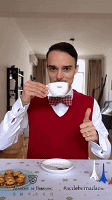
Let bones on your plate
I do teach people the following for little bones:
- Chew them quietly if needed
- Bring your fork under your mouth
- Cover it with your hand to spit the bones
- Rest them back on your plate

However, these would have been horrible manners in the 16th century. Indeed, Erasmus von Rotterdam (1466-1536) mentioned “food should not be waster, one well-mannered person shouldn’t let bones on the plate”.
What was the rule then?
His rule was to…spit them on the ground ! Or to give them to dogs. The good manner was to “first watch over your shoulders before spitting”.
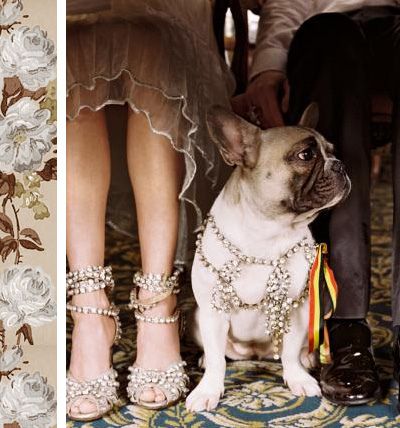
Wipping your mouth
How to use the napkin ? Yes, it’s for your mouth.
- You let it on your lap
- Fold in two
- Use the inside part
But how would you have done 500 years before ?
If you were an elegant princess or a nobleman you would have used… the table cloth! As only wealth people could afford a table cloth, so they used it to wipe their mouth with.

Napkins for the hands were only dedicated to cooks, waiters, servants in general to clean their hands

The world has changed, hasn’t it? And it will continue. I’m quite curious to know what our great-grand-children will think about our today’s manners! If one day mine can read these lines, I hope to make them laugh!


